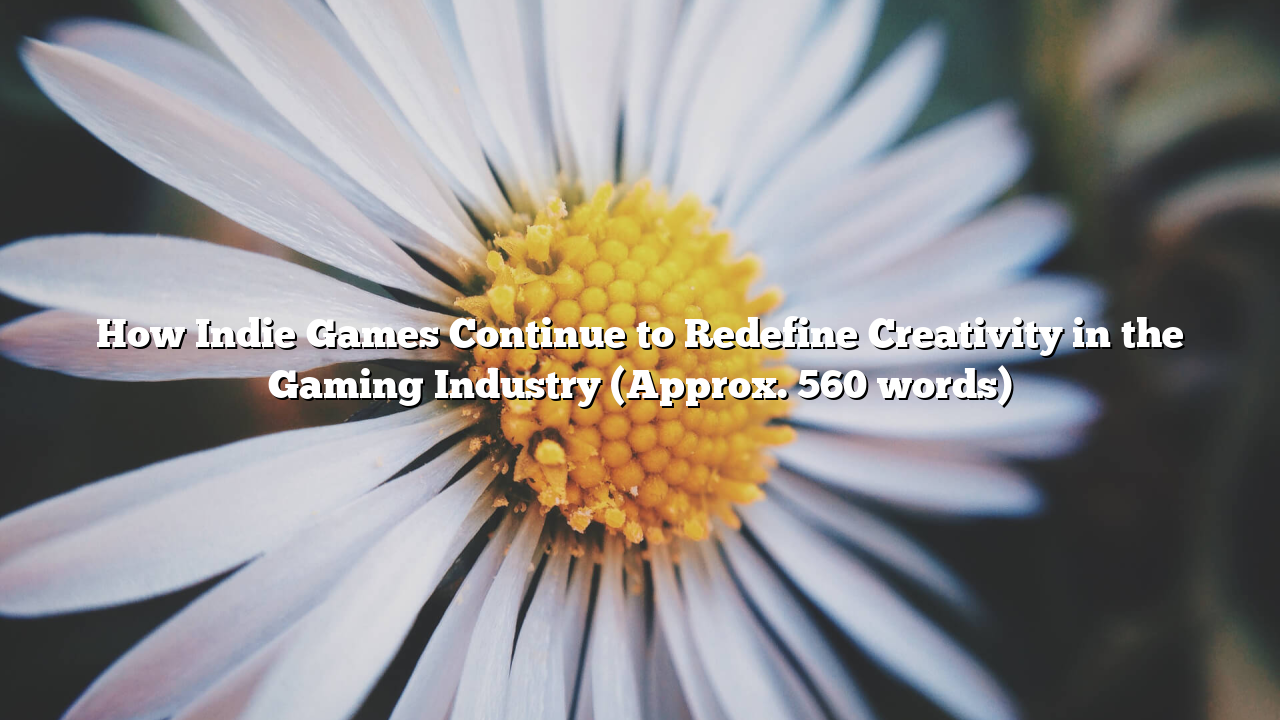Indie games have become one of the most influential forces in modern gaming, redefining creativity by challenging traditional industry norms and opening https://anassurgicals.com/philadelphia-collar/ new pathways for innovation. Unlike large studios bound by budgets, marketing demands, and corporate expectations, indie developers often have the freedom to experiment with bold concepts, unusual mechanics, and emotionally nuanced storytelling. This creative independence has allowed indie games to push boundaries in ways that mainstream titles sometimes cannot.
One of the greatest strengths of indie developers is their willingness to explore unconventional ideas. Games like Undertale, Hollow Knight, and Stardew Valley started as small personal projects but became global successes due to their originality and passion-driven design. These titles prove that a game doesn’t need cutting-edge graphics or massive budgets to captivate players; it only needs a compelling vision and meaningful gameplay. This mindset contrasts sharply with AAA studios, which often rely on predictable formulas to ensure commercial success.
Another area where indie games excel is storytelling. Many indie titles deliver intimate narratives that resonate emotionally with players. For example, Celeste explores mental health struggles through symbolic platforming challenges, while Spiritfarer uses management gameplay to explore themes of grief, acceptance, and companionship. These games demonstrate how indie developers often prioritize emotional depth over spectacle, crafting experiences that feel deeply personal.
Indie games have also paved the way for unique art styles and creative visual direction. Instead of competing with hyperrealistic AAA graphics, indie titles embrace artistic expression through stylization—pixel art, hand-drawn animation, minimalist color palettes, or surreal visual design. This approach not only sets them apart aesthetically but also emphasizes mood, atmosphere, and personality. Games like Gris and Cuphead are celebrated for their distinctive artistic identities.
From a technical perspective, indie developers have also revolutionized genre experimentation. Rogue-likes, metroidvanias, narrative-driven puzzles, and survival crafting games owe much of their resurgence to indie creators. These developers often combine genres in unexpected ways, producing hybrid gameplay that feels fresh and original. Their willingness to take risks encourages innovation across the industry.
Furthermore, digital distribution platforms like Steam, itch.io, and the Nintendo eShop have given indie developers unprecedented access to global audiences. The rise of social media and content creators has also played a significant role, allowing small studios to gain visibility through word of mouth, influencer engagement, and community support. Crowdfunding platforms like Kickstarter empower fans to directly support ambitious indie ideas, turning personal dreams into fully realized games.
The impact of indie games on the industry extends beyond their own releases. AAA studios increasingly adopt ideas that originated in indie spaces—procedural generation, emotional storytelling, creative art styles, and innovative mechanics. This cross-pollination highlights how indie creativity continually pushes the industry forward.
Ultimately, indie games remind us that innovation thrives where passion meets freedom. Their contributions continue to reshape gaming, proving that creativity—not budget—defines great interactive experiences.
